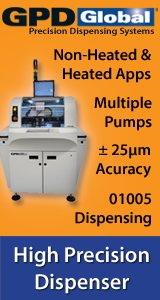Velocity Sensor
A velocity sensor or velocity receiver is a sensor that responds to velocity rather than absolute position. For example, dynamic microphones are velocity receivers. Likewise, many electronic keyboards used for music are velocity-sensitive and may be said to possess a velocity receiver in each key. Most of these function by measuring the time difference between switch closures at two different positions along with the travel of each key.
There are two types of velocity receivers, moving coil and piezoelectric. The former contains a coil supported by springs and a permanently fixed magnet and require no output signal amplifiers. Movement causes the coil to move relative to the magnet, which in turn generates a voltage that is proportional to the velocity of that movement.
Piezoelectric sensor velocity receivers are similar to a piezoelectric accelerometer, except that the output of the device is proportional to the velocity of the transducer. Unlike the moving coil variety, piezoelectric sensors will likely require an amplifier due to the small generated signal.
Velocity sensor is available through Quick Time Engineering Inc.
Vibration Transducer
Vibration can be defined as the mechanical oscillation about the equilibrium position of a machine or component or simply the back-and-forth motion of a machine or component. Vibration in industrial equipment is sometimes part of the normal operation but sometimes it can be a sign of trouble. There are two types of vibration, axial (thrust) vibration and radial vibration. Axial (Thrust) vibration is a longitudinal shafting vibration or parallel to the shaft of a motor. Radial vibration occurs as a force applied outward from the shaft. Radial vibration would occur if there is a heavy spot in the motor as it rotates. If there is a deformed fan blade, as the fan spins, the deformed fan blade would pull outwardly on the shaft of the motor causing radial vibration.
There are many types of vibration transducer or vibration sensors that monitor vibration. The accelerometer is the first type of vibration sensor. Accelerometers are devices that measure the vibration, or acceleration of motion of a structure. They have a transducer that converts mechanical force caused by vibration or a change in motion, into an electrical current using the piezoelectric effect. There are two types of accelerometer, high impedance accelerometer and low impedance accelerometer. High impedance accelerometers produce an electrical charge which is connected directly to the measurement instruments. They require special accommodations and instrumentation so they are found in research facilities or high-temperature applications. Low impedance accelerometers have a charge accelerometer as their front end as well as a built-in micro-circuit and transistor that converts that charge into low impedance voltage. This type of accelerometer easily interfaces with standard instrumentation which makes it commonly used in the industry.
The next type of accelerometer is the strain gauge vibration sensor. A strain gauge measures the strain on a machine component. A strain gauge is a sensor whose resistance varies with applied force; It converts force, pressure, tension, weight, etc., into a change in electrical resistance which can then be measured. When external forces are applied to a stationary object, stress and strain are the results.
When there is a strain applied to any metallic wire, the length of that wire increases and the diameter decrease.
This increase in length and decrease in diameter will change the resistance of the wire which will give us our measurement of strain on our machine component.
The last type of vibration sensor is an eddy-current or capacitive displacement sensor. Eddy-Current sensors are non-contact devices that measure the position and/or change of position of a conductive component. These sensors operate with magnetic fields. The sensor has a probe that creates an alternating current at the tip of the probe.
The alternating current creates small currents in the component we are monitoring called eddy currents. The sensor monitors the interaction of these two magnetic fields.
As the field interaction changes the sensor will produce a voltage proportional to the change in the interaction of the two fields.
When using Eddy-Current sensors it is important for the component to be at least three times larger than the sensor diameter for normal operation; otherwise, advanced calibration would be required
Vibration transducer is available through Quick Time Engineering Inc.
Ignition Cable
The ignition cables commonly referred to as the spark plug wires are an ignition system component. While the vast majority of newer vehicles have now incorporated coil on plug ignition systems, ignition cables are still found on many roads going cars and trucks. The ignition system works by firing off sparks at regularly timed intervals in order to ignite the engine’s fuel mixture. It is the job of the ignition cables to carry the engine’s spark from the ignition coil or distributor to the engine’s spark plugs.
Spark plug cables are made of durable, low resistance materials that are able to withstand the high energy of the ignition system, as well as the harsh conditions underneath the hood. As they are links that carry the spark necessary for the engine to operate, when the spark plug cables have any issues, they can cause problems that can affect the engine performance.
Ignition Cable is available through Quick Time Engineering Inc.
Quick Time Engineering Inc is an international company with offices and distribution networks in the USA, Hong Kong, Europe and Malaysia.
In its 20 years of operation since 1998, Quick Time Engineering Inc had emerged from a local engineering company with a single staff that provided solutions in factory automation to become nowadays a company that serves the Oil & Gas industries, EPC contractors, System Integrators and other industrial automation and process control companies worldwide. Customers from over 50 countries worldwide trust us with their need for process control instruments and industrial automation products.
For more information about Quick Time Engineering Inc, visit www.quicktimeonline.com or email enquiry@quicktimeonline.com






